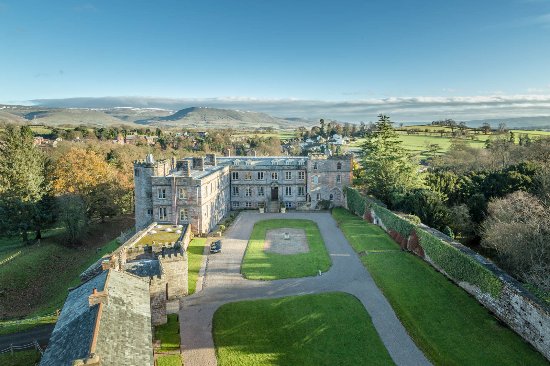Sixty-years-old might seem fairly late in life to embark on a career in property restoration, but this is exactly what Lady Anne Clifford, Countess of Dorset, Pembroke and Montgomery did.
You see, for much of Lady Anne’s life - which began in 1590 when she was born at Skipton Castle in West Yorkshire - she had been fighting a bitter legal battle over no fewer than five castles and a considerable amount of land across Yorkshire and Westmorland.
Appleby, Brougham, Brough, Pendragon and Skipton Castles had all belonged to her father, George Clifford, 3rd Earl of Cumberland. The Earl was one of Queen Elizabeth’s esteemed courtiers – rising to fame and favour thanks in some part to his skill as a jouster. Upon his death when Lady Anne was 15, possibly concerned that his wealth was insecure and that this would damage Anne’s marriage prospects, Lady Anne's father left his estates to his bother.
True, Lady Anne’s two brothers had both died but her father’s bequest was a direct breach of an entail which stated that the Clifford estates should descend lineally to the eldest heir, whether male or female, dating back to the time of King Edward II.
And so, a 40-year legal dispute began, with Lady Anne sparring first with her uncle, and then her cousin, to reclaim her castles refusing to settle for anything less than her full inheritance.
Lady Anne’s determination for justice never wavered. She didn’t back down when offered financial compensations in lieu of actual bricks and mortar, or when her uncle refused to hand over the Skipton as per legal requirement in 1607. Both of her marriages failed in part due to her preoccupation with her legal wrangling and King James even begged her to drop the case but Lady Anne refused.

Only in 1643 did Anne regain the Clifford family's lands and the castles which stood on them after her cousin died leaving no heir. She hadn’t won the legal battle but the outcome was the same, albeit decades late.
She didn’t return to the North until 1649 after the English Civil War was over. The castles Lady Anne fought for were not in a good state having been destroyed variously at the hands of fire, abandonments and battle.
She set about rebuilding and repairing the fortresses with a commitment to retaining their antiquity. Despite Lady Anne being a devoted royalist, Oliver Cromwell, allowed her to continue her reparations. This is likely because he didn’t see her as any threat to his power.
Lady Anne’s restorations and building work also extended to benefit the communities around her various castles – for example with reparations to churches.
It is at St Lawrence’s Church, Appleby that Lady Anne was laid to rest after her death at Brougham Castle in 1679. Her tomb is lavishly adorned with splendid heraldry, fitting for the last member of one of England’s great medieval dynasties.

Lady Anne’s Needlework Festival will take place in Appleby, Lady Anne's beloved home, from 4th to 17th July 2021.






